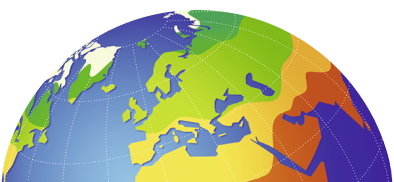Australia - Aborigines
Economy and land use
978-3-14-100890-6 | Page 165 | Ill. 5

Overview
The exact origin of the Australian aborigines is uncertain. They probably migrated across the Malay Archipelago 40,000 to 60,000 years ago during an ice-age lowering of the sea level. They lived as hunter-gatherers according to the natural conditions. However, they were by no means a single homogeneous tribe, but different peoples with over 200 languages and many more dialects. The boomerang was not known to all these peoples as a hunting weapon. At first, they preferred to settle in the favourable areas of the continent. Then, in the course of the occupation of their residential areas by European settlers, they were forced into the outback, i.e. into those regions where extreme aridity, deserts, and other unfavourable factors make agricultural use virtually impossible.
Historic developments and Aborigines today
With European immigration, a rapid decimation of the aborigines began through displacement, murder and introduced diseases. Probably around 500,000 – 750,000 indigenous people still lived on the continent towards the end of the 18th century, but by the middle of the 19th century their numbers had fallen to less than 100,000, and by 1920 there were only 60,000.
In the 1996 census, 353,000 descendants of indigenous people were counted again. The majority were Aborigines, with a smaller minority being the unrelated Torres Strait Islanders, who live mainly in northern Queensland in the Torres Strait area and have a strongly Melanesian culture. To date, the number of descendants of aborigines has grown again to around 800,000, making up a good three percent of the population. Exact figures have only been available since the descendants of Aborigines were formally treated as equal to all other inhabitants in the course of a constitutional amendment in 1967. Since then, anyone who calls themselves an Aborigine is considered one.
The awareness that Aborigines also have rights has developed late among the white majority. The Land Rights Act of 1976 granted Aborigines land ownership rights for the first time. Previously, they had either been pushed back into reserves or settled around mission stations. It was not until 1992 that the High Court, Australia's highest court, ruled in a landmark judgment that they have title to land to which Aboriginal people have maintained traditional ties ("Native Title Judgment"). In the meantime, they have been given ownership rights to land areas with extensive self-government (Land Councils) under the supervision of the federal government. The best-known examples are the Uluru-Kata Tjuta National Park (Ayers Rock, Olgas) and the Kakadu National Park, which secure income from tourism for the descendants of the indigenous people. Similar agreements exist with mining companies. Since 2007, the indigenous people have land rights to rainforests on the east coast again, and there are several national parks here as well. A milestone towards equality was the government's official apology in 2008, by Prime Minister Kevin Rudd, for all wrongs committed against Aboriginal and Torres Strait Islander people, especially for the forced assimilation of children from Indigenous families from 1900 to 1973.
While a majority of Australians now consider Indigenous art and culture as part of their national identity, Indigenous Australians continue to be an economically and socially disadvantaged population group. They are disproportionately affected by poverty and unemployment, and infant mortality is significantly higher among them.




